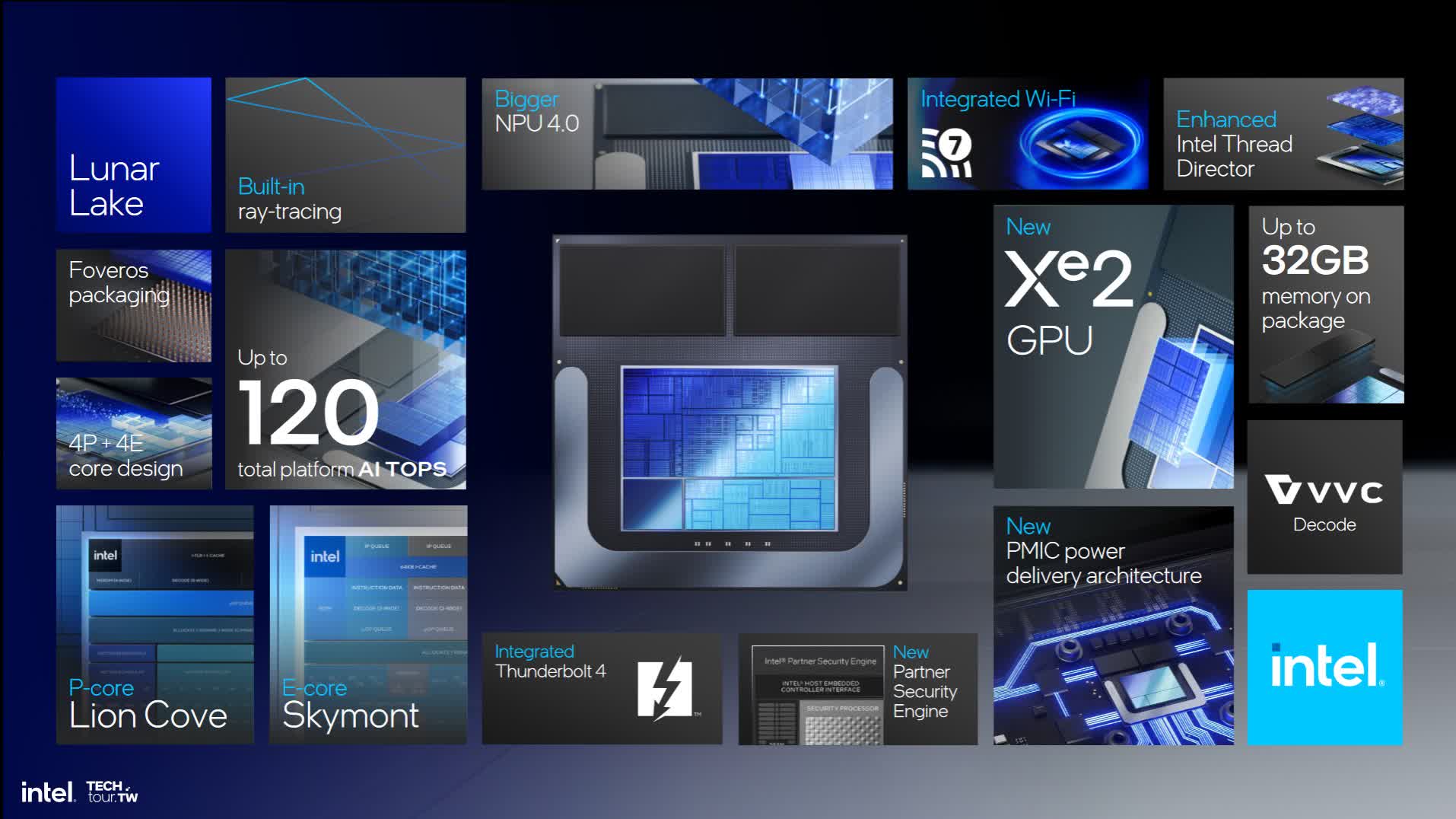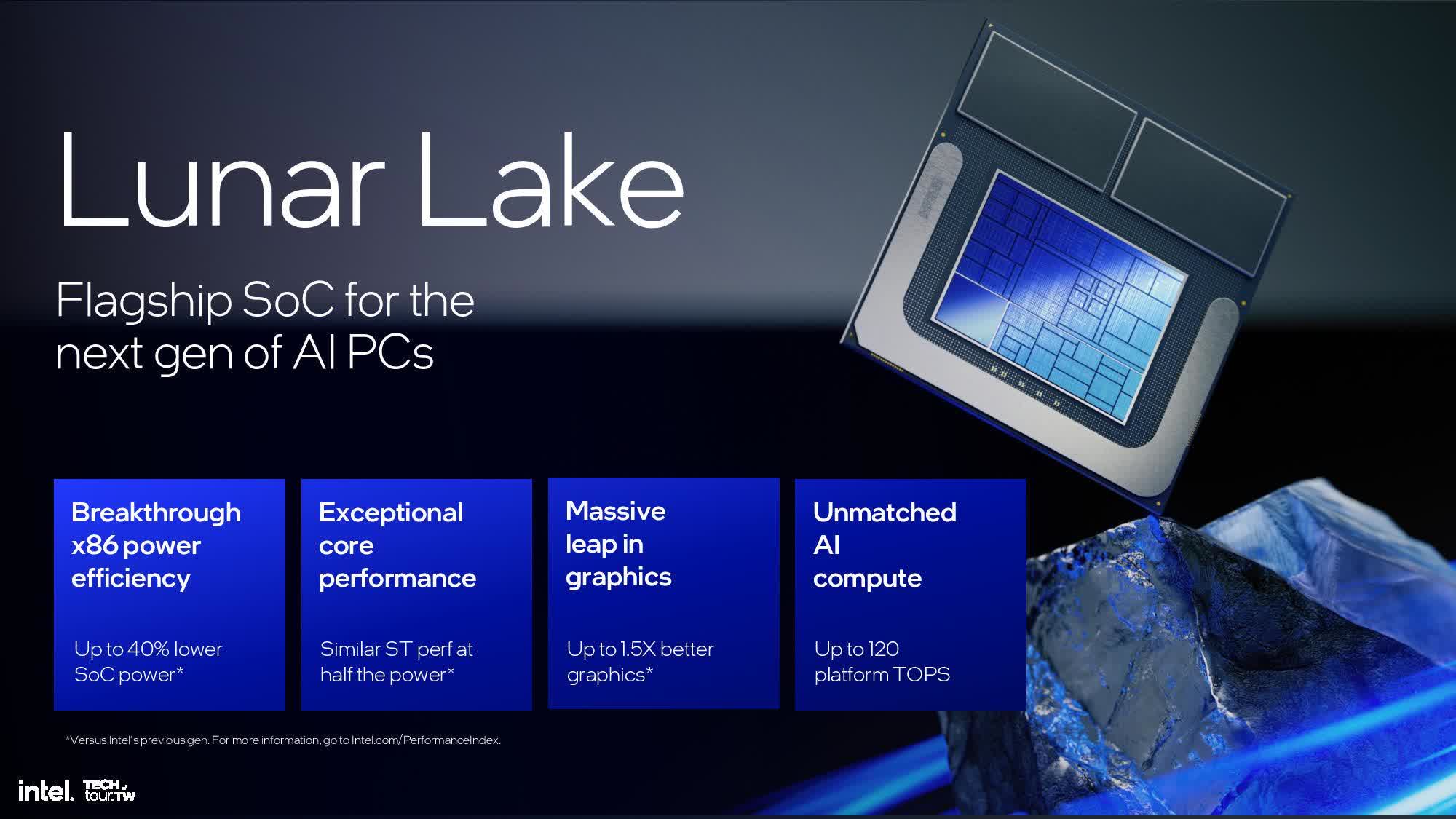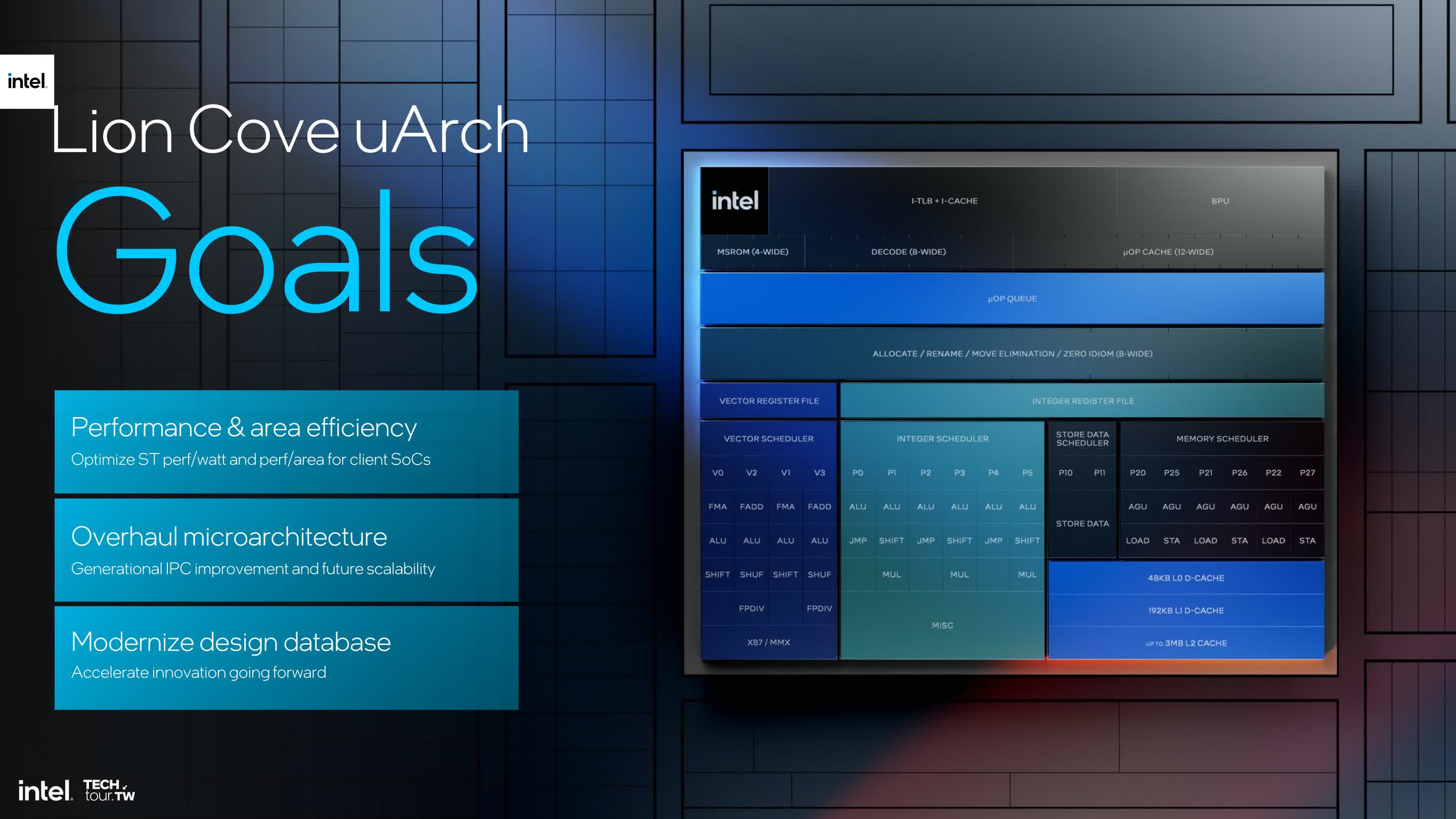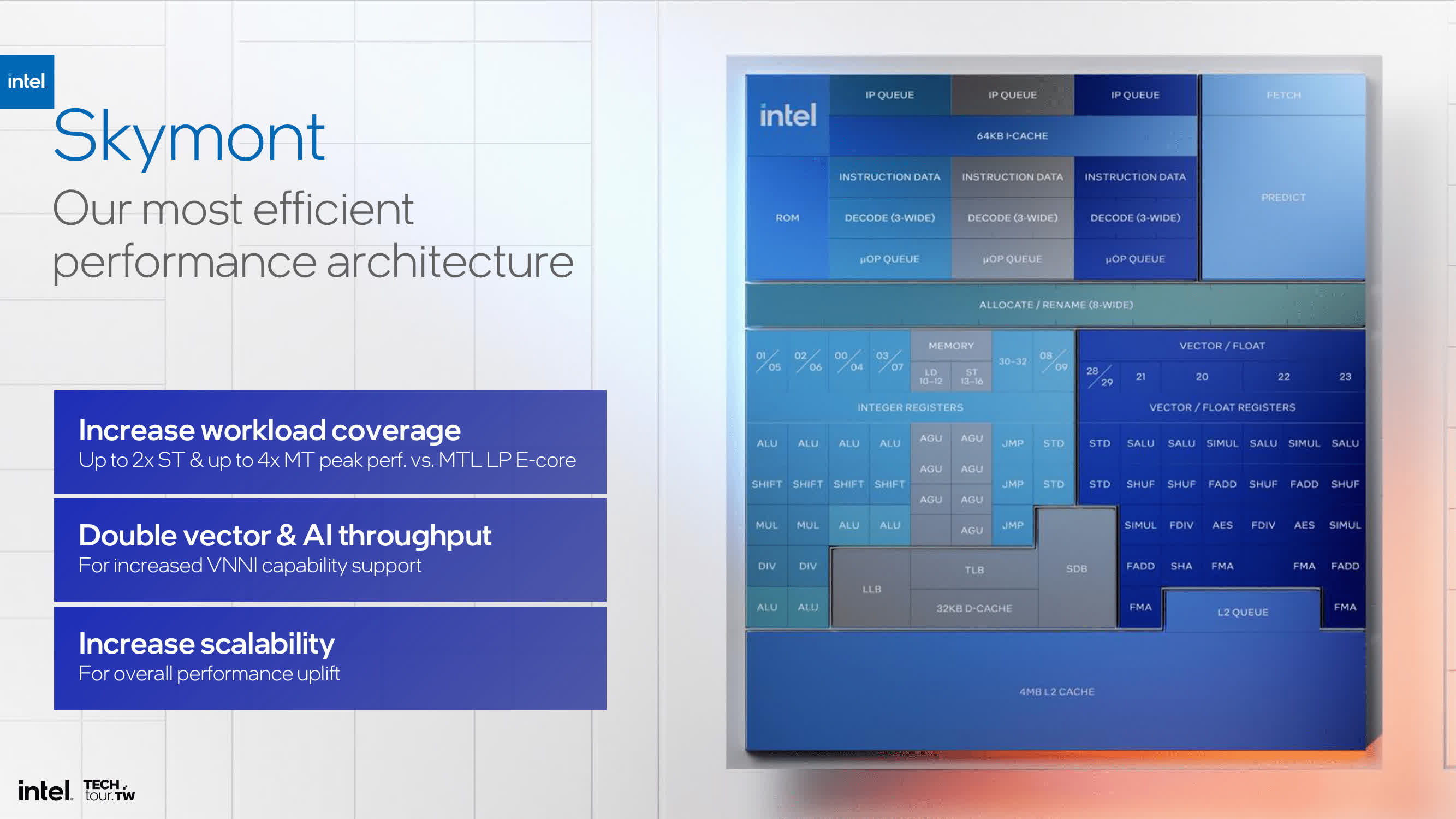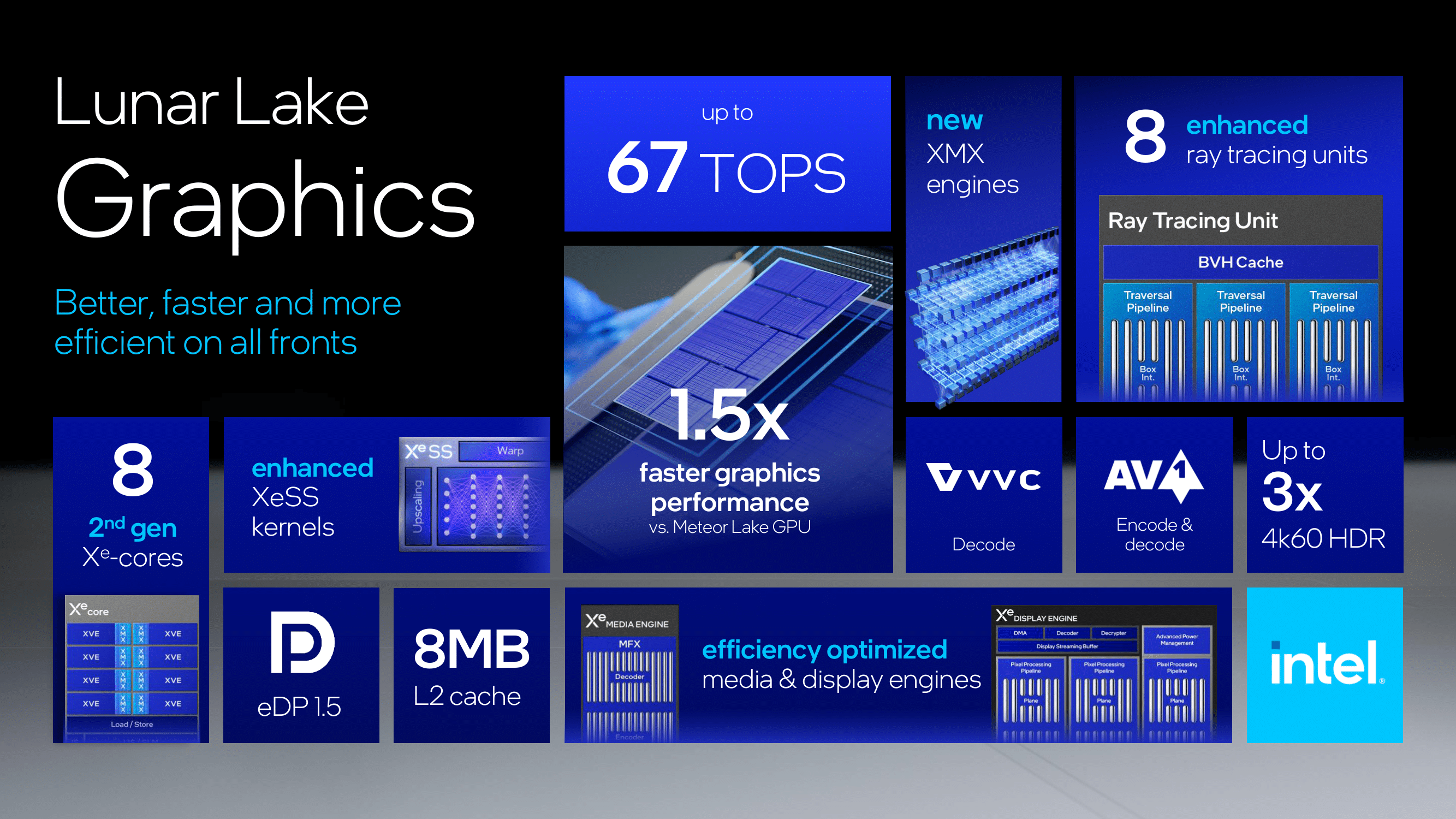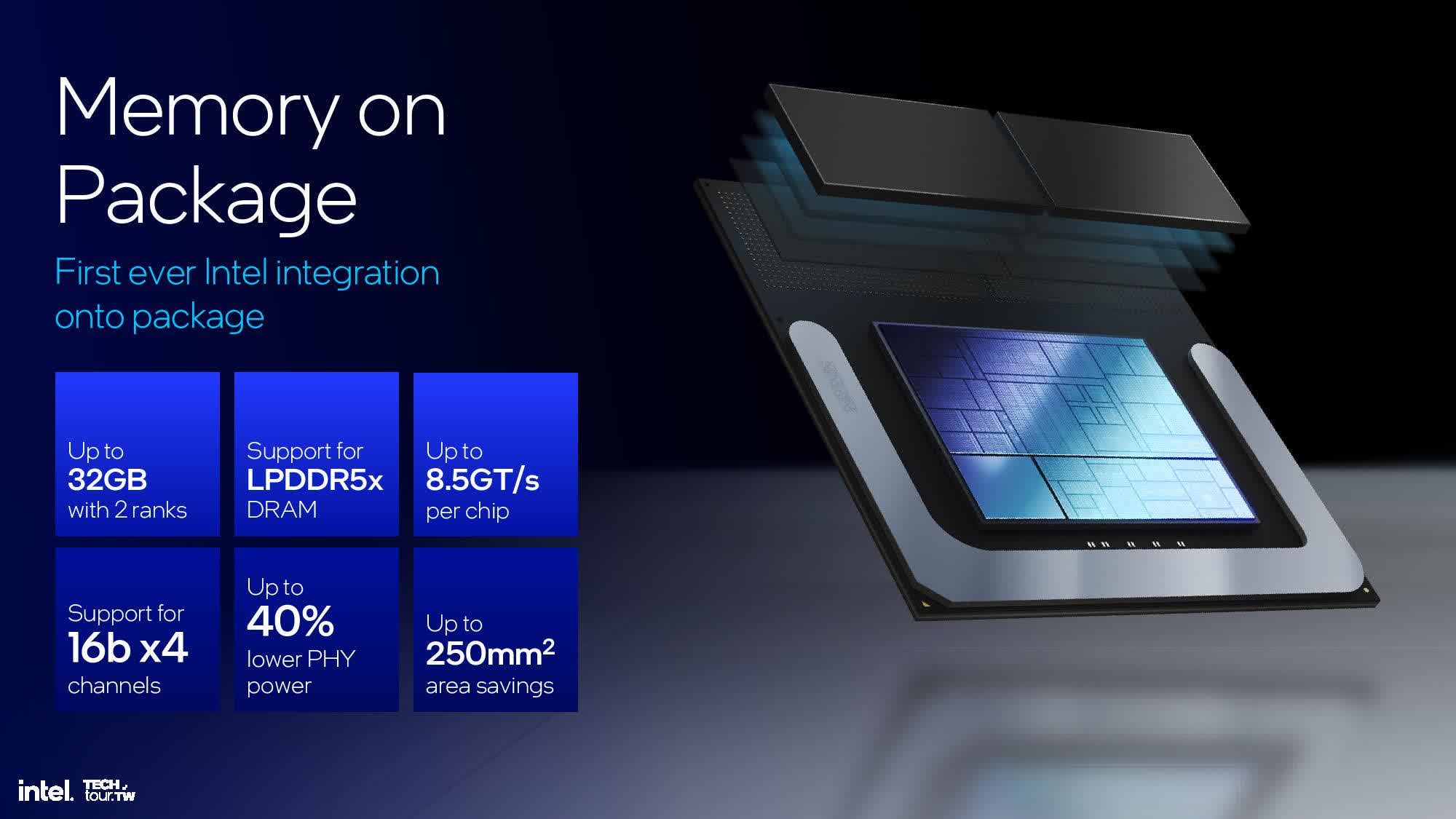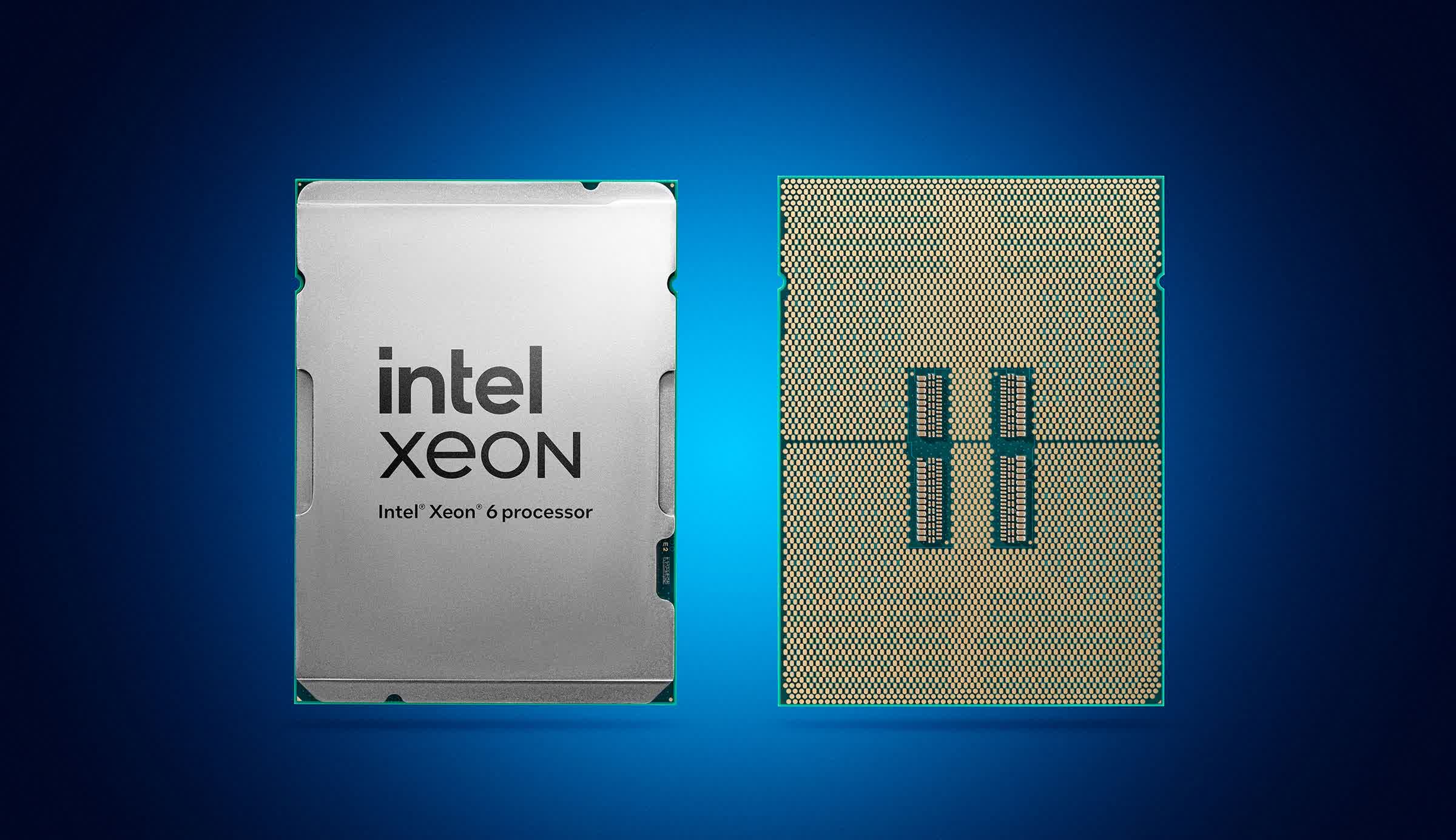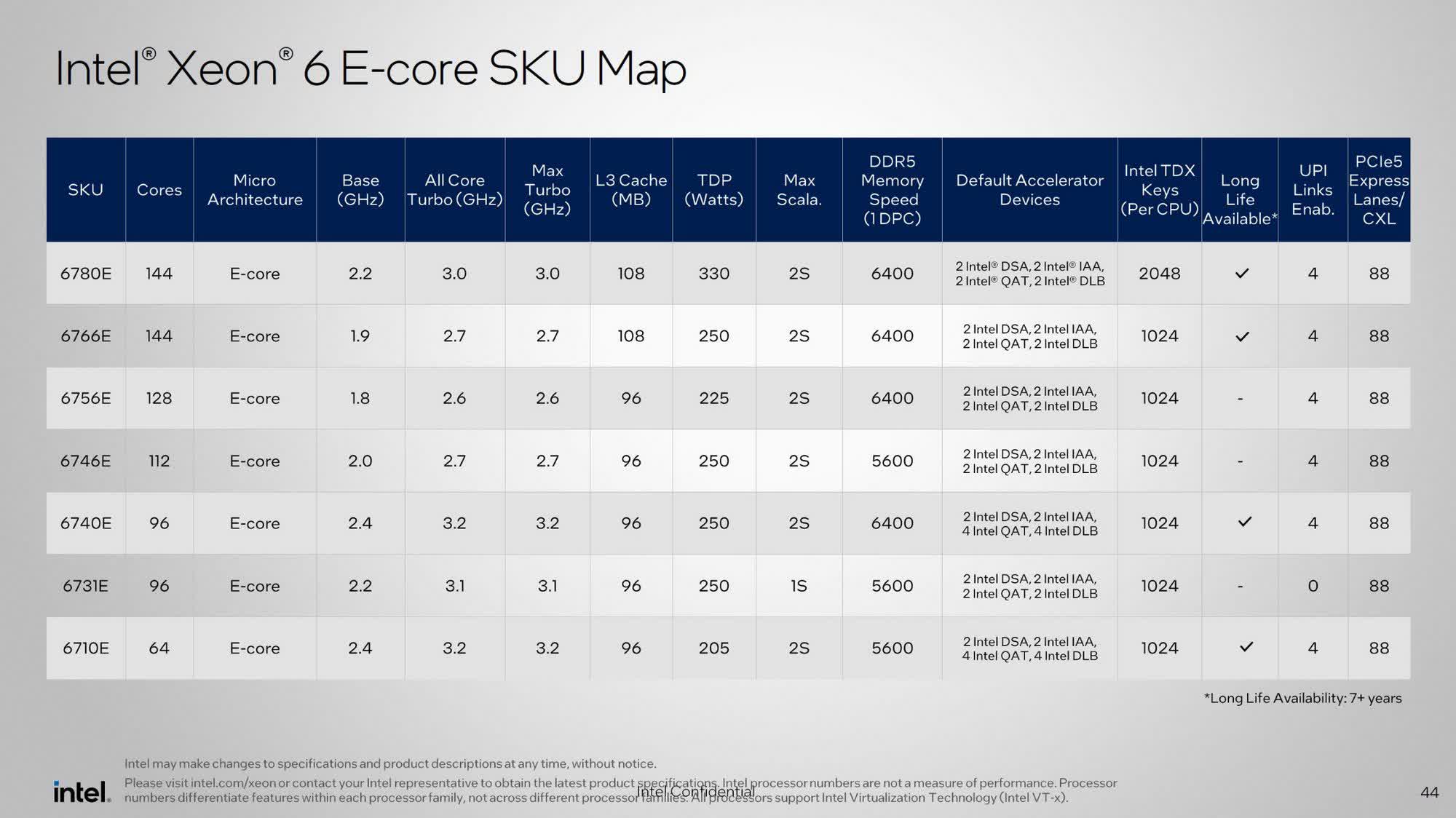In a nutshell: Intel has announced its next-gen consumer laptop and server processors at Computex 2024. Codenamed "Lunar Lake," the new mobile chips are an upgrade over the Meteor Lake SoCs and are expected to power a slew of thin and light AI PCs in the coming months. Meanwhile, "Sierra Forest" CPUs are designed for high-density, scale-out workloads in data centers.
According to Intel, Lunar Lake processors will offer a number of advantages over Meteor Lake, including better power efficiency, a 4x increase in NPU processing and 50 percent faster Arc GPU performance, thanks to the use of the next-gen Battlemage graphics architecture.
The new SoCs will also have on-chip memory for a smaller footprint and faster memory access. The chips are said to offer up to 68 percent IPC gain for E-cores and 16 percent IPC gain for P-Cores.
Lunar Lake is Intel's first CPU lineup to feature built-in NPUs with at least 40 TOPS of AI performance and up to 32GB of LPDDR5X on-package memory, meeting Microsoft's Copilot+ PC specifications. It will come with Lion Cove P-cores, Skymont E-cores, Xe2 GPU architecture, and NPU 4 neural processor architecture for faster AI processing.
According to Team Blue, the new processors will offer a "massive leap in graphics and AI processing power," delivering up to 40 percent lower SoC power and 3x higher AI compute power compared to their predecessors. For now, Intel has only revealed 8-core chips with 4 P-cores and 4 E-cores. It remains to be seen if other core configurations will be available later.
Interestingly, the Lunar Lake tiles will be fabbed not by Intel, but by TSMC using a mix of its N3B and N6 process nodes. Laptops featuring the new chips are expected to hit the market in time for the holiday shopping season.
Alongside Lunar Lake, Intel also announced new Xeon 6 server CPUs from the Sierra Forest family. These processors are said to be based on an open ecosystem with open software and open platforms. They will include both P-Core and E-Core SKUs to address unique workload requirements.
The E-core-only chips are designed specifically for web and microservices, database and analytics, infrastructure and storage, networking, and Edge applications, with Intel claiming up to a 4.2x performance uplift in the aforementioned workloads when compared to 2nd-gen Intel Xeon chips.
The Xeon 6700E lineup will feature a total of 7 SKUs at launch, offering between 64 and 144 cores. They will be clocked at up to 3.2GHz, offer up to 108MB of L3 cache, and have up to 330W max TDP. The new chips will support up to 8-channel DDR5-6400 memory, up to 88 PCIe Gen 5.0 lanes, and 4 UPI 2.0 links rated at 24 GT/s.
